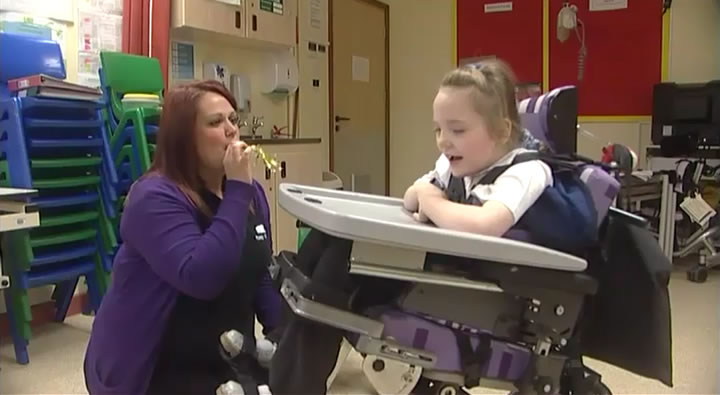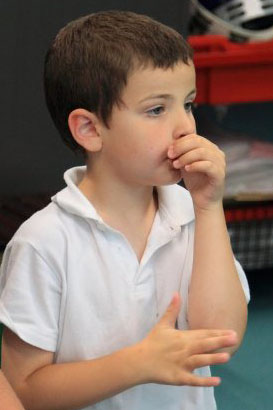
- Children with complex need to achieve some control over their lives which also helps them feel safe and secure.
- This means that the adult needs to be able to read their intentional and unintentional communication with the aim of being able to help children to communicate intentionally and consistently. This helps the child feel in control.
- Improving communication is very helpful when considering how to develop relationships and promote positive behaviour.
Watch this video clip in which a teacher explains how a trampolining session is used to develop a child's intentional communication.
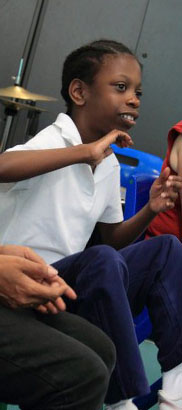
As we have seen, children with complex disabilities may have very little speech and are likely to communicate through a range of other means, including:
- Vocalisation
- Head movements
- Facial expressions
- Tongue activity
- Eye contact, gaze or eye-pointing, and
- Hand and arm activity
It is often very difficult to interpret these signals. It is important, therefore, for adults who know the child well to work together to:
- Discuss meanings.
- To interpret meaning consistently.
Watch this video in which a headteacher and a teaching assistant describe how they try to establish how a child with pre-intentional communication expresses preferences.
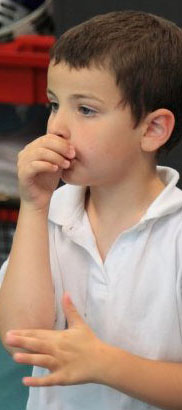
It is sometimes difficult to interpret what a child with complex needs is trying to communicate, for the following reasons:
- The communication is very brief and is not noticed.
- The communication is not consistent.
- The communication means different things in different contexts.
- The communication means different things to different people.
- The child is expected to have an opinion, e.g. between a choice of activities, when they may not have one.
- Adults assume that they know what children like and don't like but the children changes their preferences over time.
Listen to Emma's mother, Ruth, talking about the issues of communication.
How does Emma communicate?
Why might people find it difficult to understand what she is saying?
How does Emma's communication affect her behaviour?
Possible answers
You may have answered the questions as follows:
- Emma communicates using signs and gestures
- People may find it difficult to understand Emma because many of her signs are ones she has made up herself and her poor coordination may mean that signs are not well executed, and
- When Emma cannot communicate, she becomes frustrated and angry.
Return
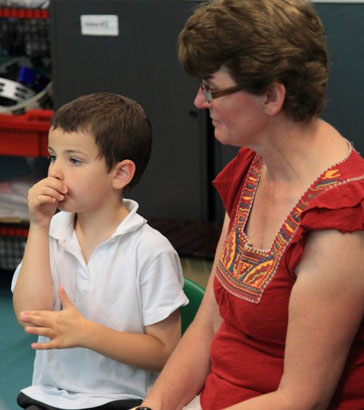
Keeping in mind a child you know with emotional and behavioural difficulties and where there is little open communication, have a look at these questions:

Porter et al (2001) have provided a useful step-by-step framework to help adults interpret the communication of children with complex difficulties.
Porter, J., Ouvry C. and Morgan M. (2001) Interpreting the communication of people with profound and multiple learning difficulties. British Journal of Learning Disabilities, 29. 12-16.

